Horseback safari in South Africa based on a very comfortable lodge. Mornings and afternoons on horseback safari, and additional activities offered.
 Excellent valuefor this horseback safari
Excellent valuefor this horseback safari Flexible safari with optional activities
Flexible safari with optional activities Flexible arrival and departure day
Flexible arrival and departure day Very comfortable accommodation
Very comfortable accommodation
-24.146746307119, 28.300789
This equestrian safari offers an incredibly varied riding experience for all levels of riders. Safari trip rides are made on demand with great flexibility according to your level and your desires. Quiet walks, or with great gallops in the wild savannah ... These are the perfect holidays, for riders wishing to experience going on horseback to meet African fauna without dangerous game (elephants and lions). Six main equestrian activities are also offered: game viewing, polo, swimming with horses, western games, cross country, natural show jumping. Many activities are also offered for non-riders. You will be accommodated in a beautifully appointed lodge on the edge of a large lake, in the domain's private reserve. During your stay you can spend, with supplement, one or two nights in a typical and comfortable camp in the heart of the bush.
EQUESTRIAN SAFARIS
SEE ALL OUR OFFER: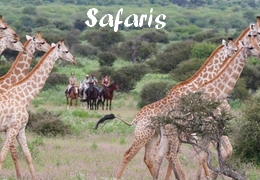
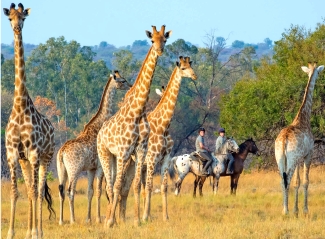
SOUTH AFRICA SAFARI
INDICATIVE ITINERARY:
Day 1: You will be met at Johannesburg International Airport and transferred to your lodge. Arrive at the lodge for a late lunch.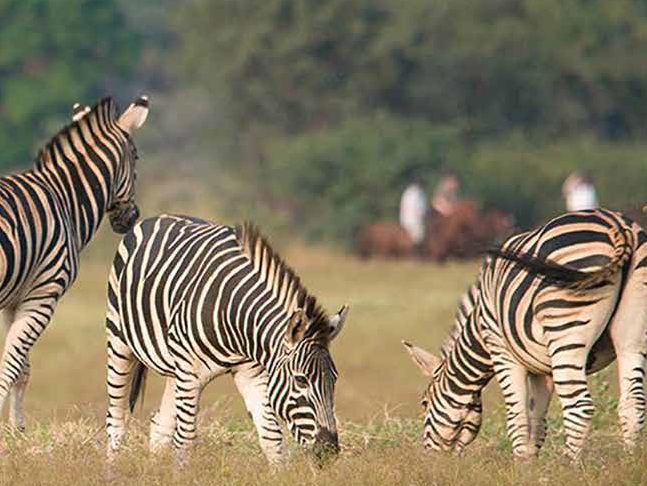
Days 2 to 7: There is no defined program, the horse safari is adapted according to your equestrian level and your desires. Groups rarely exceed more than 8 riders. On a typical day, you go after breakfast for an early morning stroll. Return to the lodge for lunch. Two equestrian activities per day. Longer rides (up to 3-4 hours) are planned for the morning, afternoon rides are shorter (1-2 hours).
In the early afternoon, you can relax, cool off in the swimming pool, or take a walk in the surrounding bush. Once the heat of the day has passed, you leave for a ride in the late afternoon. The rides start through the reserve. Wildlife you are likely to see on the reserve include: giraffes, zebras, hippos, impalas, elks, kudu, 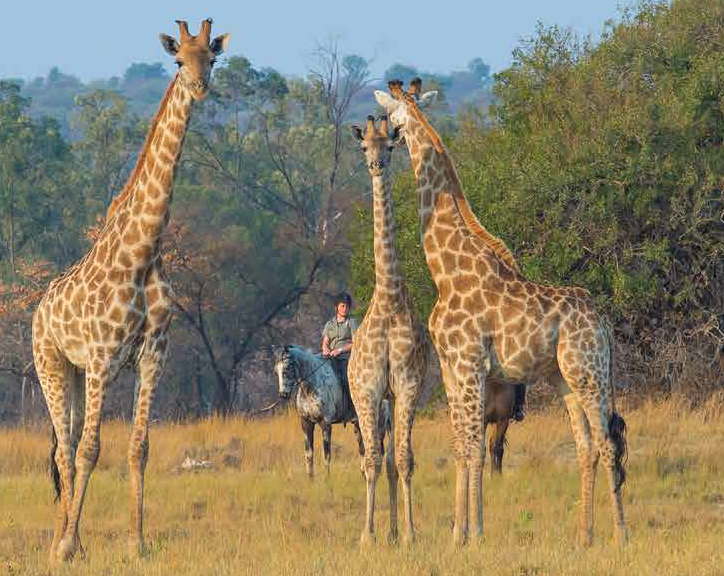 caracals, jackals, and warthogs. There are also more than 300 species of birds recorded in the region.
caracals, jackals, and warthogs. There are also more than 300 species of birds recorded in the region.
Depending on the presence of the hippos in the lake, you may have the chance to swim with your horse. There may also be a full day ride to a nearby reserve with lunch on the trail.
Day 8: End of your equestrian safari, departure, transfer to Johannesburg (journey of approximately 5h30).
OPTIONAL NON RIDING ACTIVITIES:
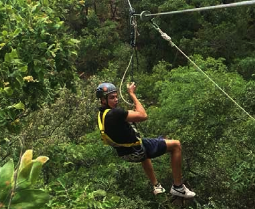
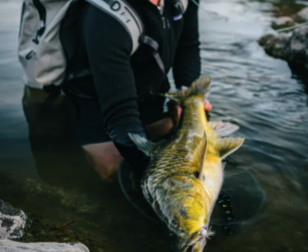
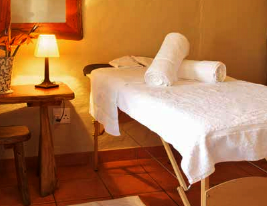
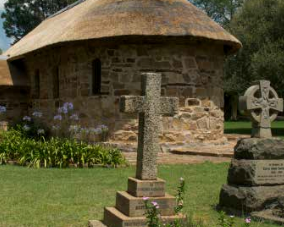
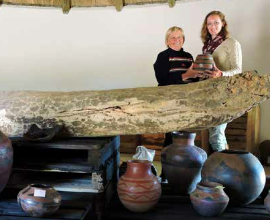
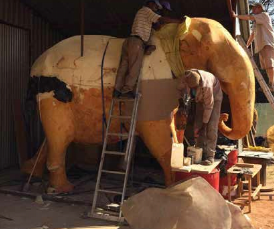
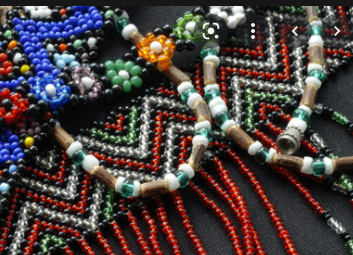
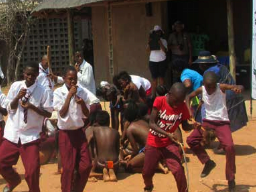
Night Sky Safari: An amazing opportunity to be guided through the night sky by a local astronomer, Dr Phil Calcott. Wrap up warm in the provided blankets as you are directed to view constellations, planets and galaxies.
Price: 300 ZAR /person. Transfer: N/A.
Lekhalo Zipline: An exciting two hour tour down six lines between 150m and 90m. Admire stunning views and wildlife before devouring the best burgers in town for lunch.
Price: 375 ZAR /person. Transfer: 150 ZAR /person.
Fishing: Fishing can be arranged with one of our staff in one of the many dams on the reserve. Bass and Barbel are readily caught and can be cooked for supper! Just make sure you catch enough for everyone.
Massage: Massages can be booked with Lydia, our resident masseuse. There is an additional cost for all treatments.
Sunday Service: Those interested are very welcome to join us at the local church service (non- denominational) held every Sunday at 9:30am. We can organise a short ride before the service.
Service & Transport: Complimentary.
Waterberg Living Museum: The Waterberg Living Museum is a living classroom, a natural & cultural history museum, an exhibit of living creatures, and a botanical garden, all in one place. This is an amazing opportunity to learn more about the Waterberg area and its vast history that stretches back to before man.
Price: 100 ZAR /person. Transport: Complimentary.
Bullseye Taxidermy: Look around this family owned taxidermist and see what is under the skin of a taxidermy animal.
Price: No Charge. Transport: Complimentary.
Vaalwater Shopping Trip: Spend the afternoon exploring Vaalwater, visiting The Vaalwater Market, The Black Mamba, Kamotsogo Crafts and Afrihouse for African curios and decor.
Price: No Charge. Transport: Complimentary.
Telekeshi Ramasobane Cultural Village: Telekeshi is a community tourism project situated on communal land adjacent to Masebe Nature Reserve. Nestle at the base of the noth-eastern Waterberg escarpment, the site has access to this pristine and inaccessible landscape with breaktaking views and impressive geomorphological formations. Features include a 1.5 and 3 hour hike up the escarpment to view rock art, 18th and 19th century settlement sites, Middle and Stone Age tools and an initiation site.
Price: 250 ZAR /person. Transport: 300 ZAR min 4 pax.
* Indicative prices, to pay locally.
MEETING:
Day 1 at your choice at 11 am at Johannesburg airport (flight must arrive before 9:45 am). Transfer by car to the base camp.
DEPARTURE:
Day at your choice. Transfer by car to Johannesburg airport (arrival 5 p.m.): Flight must be after 7:30 pm.
TRANSFERS FROM/TO JOHANESBURG AIRPORT:
Group transfers at the fixed times (only Saturdays) : 350 € / person round trip
Private transfers out of the fixed times and days: 790 € / car round trip
FLIGHTS:
Flights to/from Johannesburg are not included in our prices because it is generally more interesting to book your flights yourself, an inclusive flights package is generally more expensive with agency commissions. However, we are at your disposal to help you find the best rates or to offer you a trip including transport on request: free service.
RIDING ABILITY: ![]()
To enjoy this equestrian safari, we advise to be comfortable at the three paces (walk / trot/ canter) outdoors. However, it is accessible to all levels: the riders are grouped by level.
RYTHM:
The paces on horseback are the walk for the observation of the animals, faster between the safari zones. Longer rides (up to 3-4 hours) are planned for the morning, afternoon rides are shorter (1-2 hours).
AGE:
The usual minimum age is 16 but exceptions can be made for private groups or very competent riders. Riders under the age of 12 cannot be accepted.
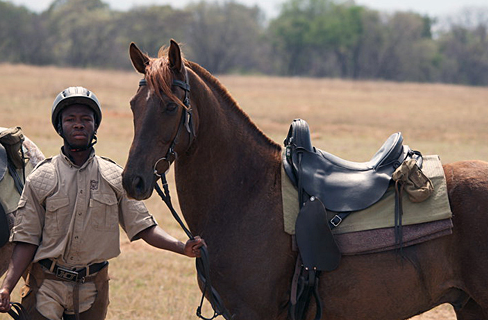 GUIDES:
GUIDES:
Local guide + English speaking support staff. The guides who run the safari have many years of experience and most of them grew up in the area and are familiar with the bush.
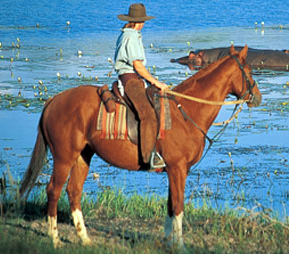 HORSES:
HORSES:
A herd of about 100 horses. The herd is comprised of Boerperds, Throroughbreds, Warmbloods and Arab crosses. They range in size from 14.3hh to 17 hh. They are in excellent condition and suitable for 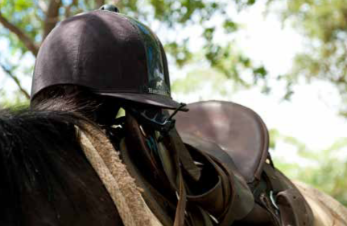 their job. Horses live freely in the bush.
their job. Horses live freely in the bush.
TACK:
Saddles are McClellan’s,designed for long hours of riding, they offer particular comfort and airflow for the horses back and for the rider's comfort.
ACCOMMODATION: ![]()
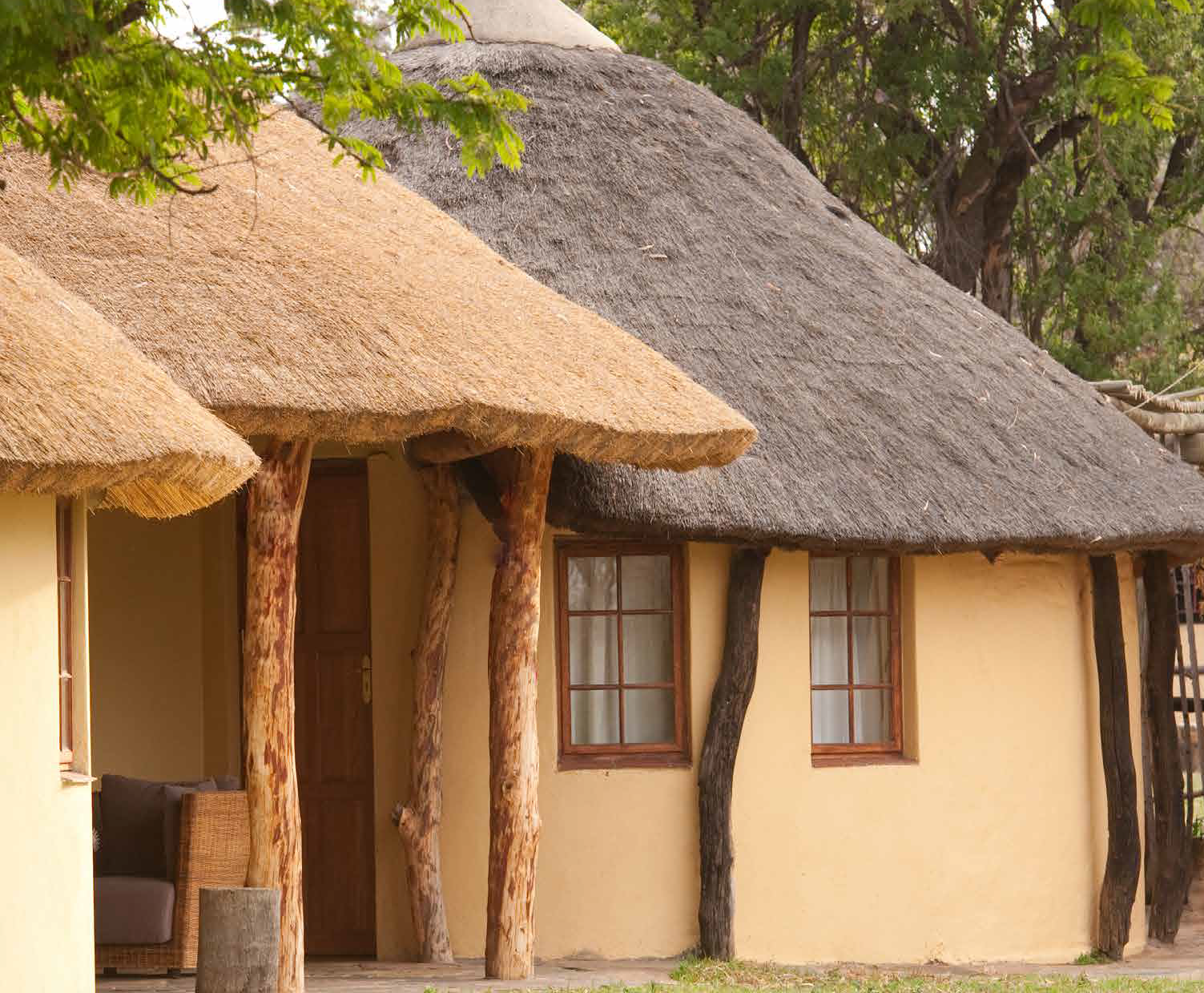 In a very comfortable lodge, tastefully renovated while retaining all of its old-world charm. It is the ideal place to get away from all. A large colonial veranda overlooks the lake, making it the perfect place to relax with a drink while soaking up the beautiful surroundings, enjoying the company of riding friends. The jetty on the lake offers bathers a private haven, there is also a swimming pool in the garden for you to relax beside the lake. Three types of rooms are available: two standard rooms, five chalets with garden (Twin Peaks, Old Rondavel and Hippo Lodge) and two luxury chalets (Rock Lodge and Lakeside). All rooms can be booked with twin or double beds, and have a private bathroom. It is possible to put a third bed in any room, but standard rooms can only accommodate one child on the third bed. The luxury chalets offer the most privacy as they are a bit removed from the other rooms.
In a very comfortable lodge, tastefully renovated while retaining all of its old-world charm. It is the ideal place to get away from all. A large colonial veranda overlooks the lake, making it the perfect place to relax with a drink while soaking up the beautiful surroundings, enjoying the company of riding friends. The jetty on the lake offers bathers a private haven, there is also a swimming pool in the garden for you to relax beside the lake. Three types of rooms are available: two standard rooms, five chalets with garden (Twin Peaks, Old Rondavel and Hippo Lodge) and two luxury chalets (Rock Lodge and Lakeside). All rooms can be booked with twin or double beds, and have a private bathroom. It is possible to put a third bed in any room, but standard rooms can only accommodate one child on the third bed. The luxury chalets offer the most privacy as they are a bit removed from the other rooms.
Massages are available at an additional cost, payable directly on site.
Optionally, you can stay one or two nights in a very comfortable bush camp: canvas tents nestle among sandstone ridges overlooking game-filled valleys. Each cozy tent has a private bathroom with a shower. The camp runs entirely on solar energy and has a small swimming pool. Wifi is available.
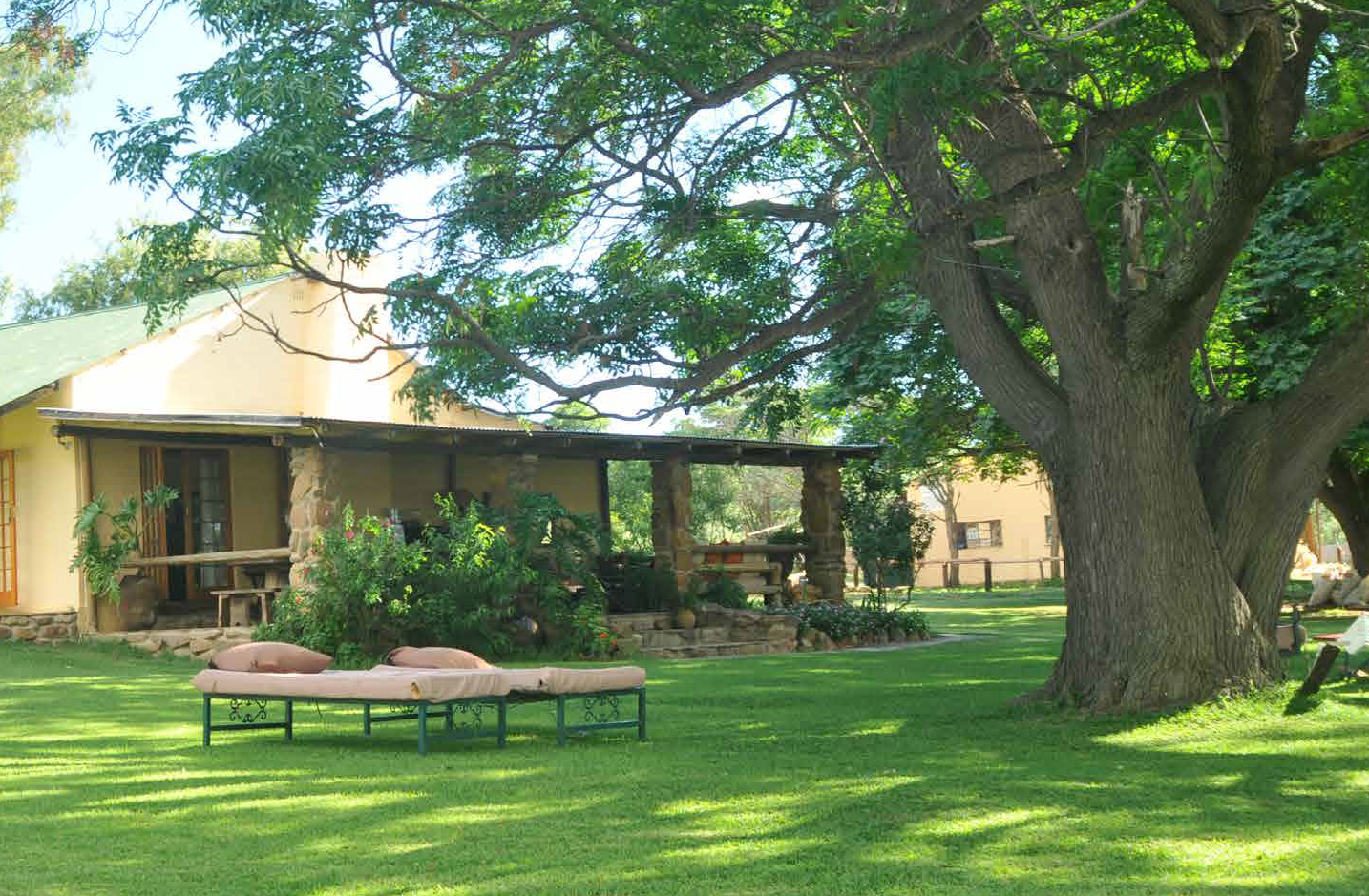
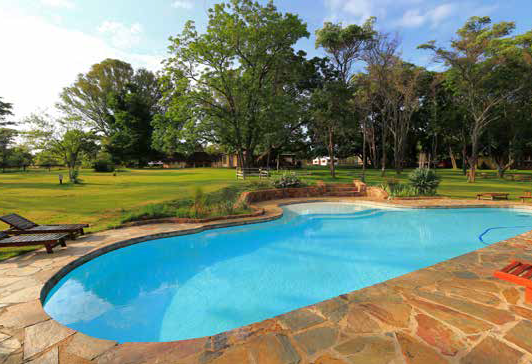
Luxury chalets: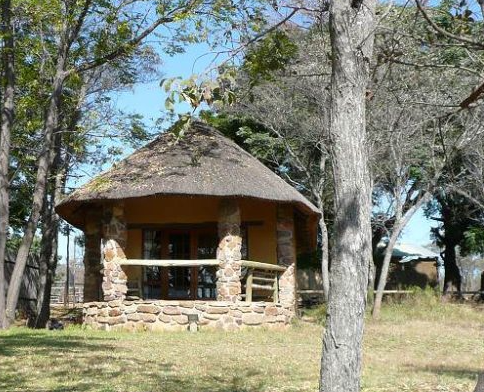
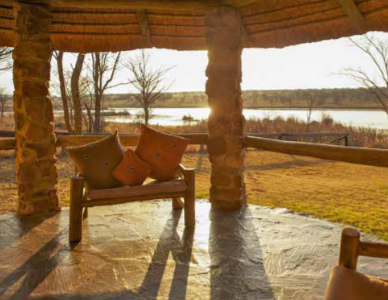
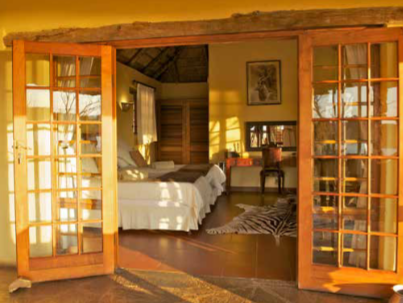
Garden chalets: 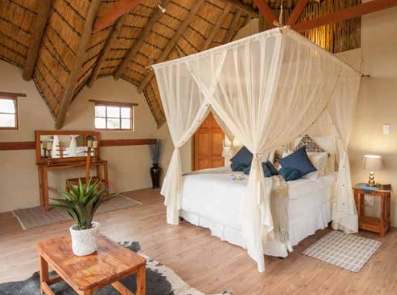
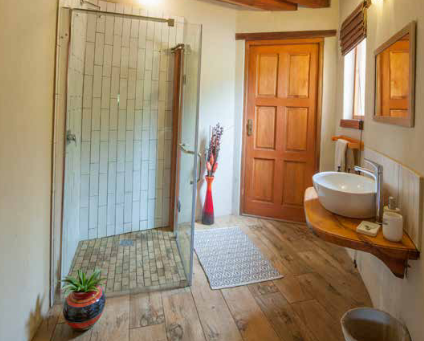
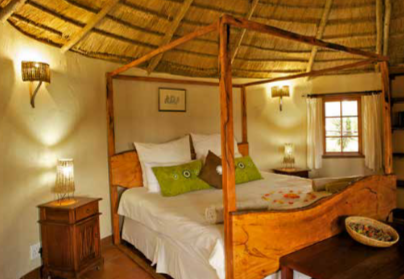
Standard rooms in the main lodge: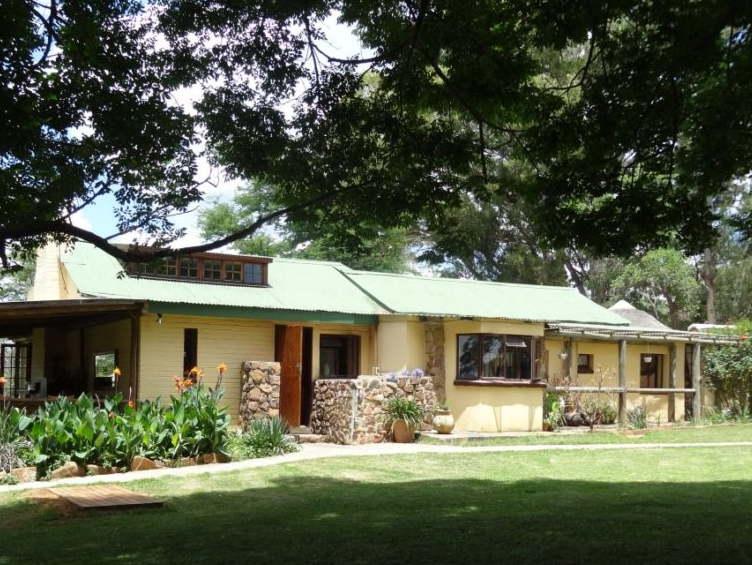
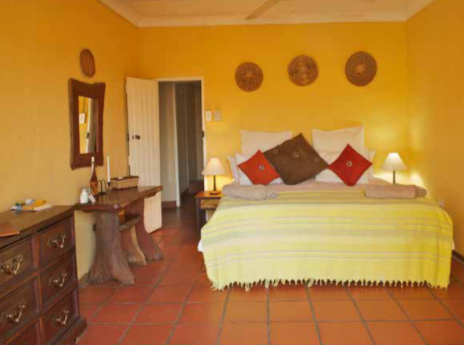
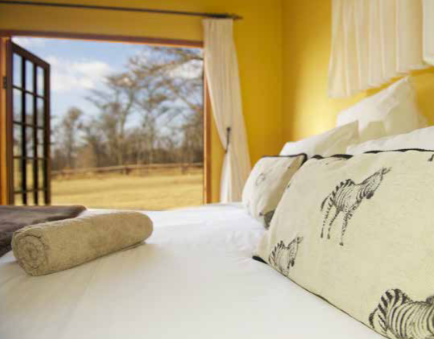
Optional: 1 or 2 nights in a comfortable bush camp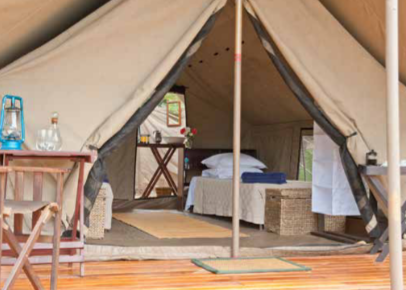
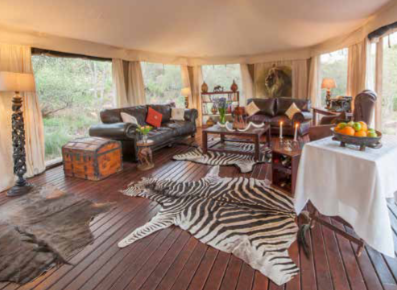
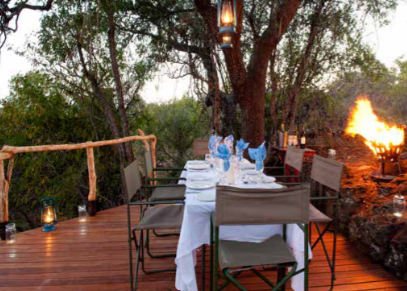
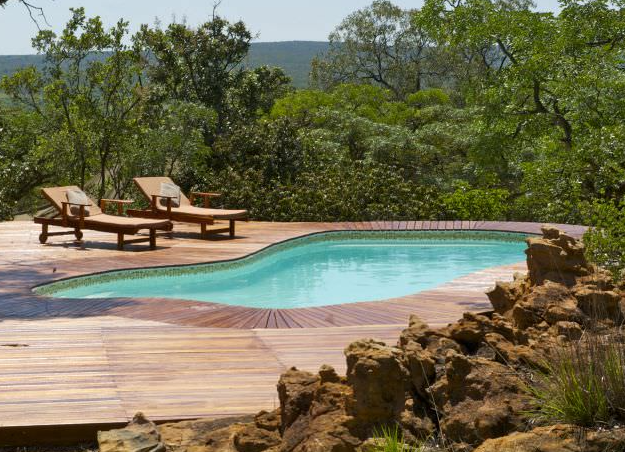
MEALS:
Meals are taken at the lodge, or at the camp. Breakfasts are copious buffets: salty or sweet, hot drinks. Lunch is a buffet, usually pies, salads, fruit and desserts. Dinner is a 3-course meal that is served to you at the table, sometimes under the canopy of the stars ! The water is filtered according to the strictest standards and is guaranteed to be perfectly drinkable. Drinks are included: beers, ciders, local wines, spirits such as gin.
2026 PRICE / PER PERSON:
THIS SAFARI CAN BE OFFERED FOR THE DURATION OF YOUR CHOICE (MINIMUM 5 NIGHTS) THE FOLLOWING RATES ARE FOR 8 DAYS 7 NIGHTS
Low Season (06/01 - 01/03):
2650 € in standard 1-2 person bedroom
3650 € in single luxury chalet
Medium Season (02/03 - 29/06):
2875 € in standard 1-2 person bedroom
4000 € in single luxury chalet
HIgh Season (01/07 - 04/01/2026):
3290 € in standard 1-2 person bedroom
4600 € in single luxury chalet
All dates:
Up yo 16 year old child: consult us for a discount
Group transfers at the fixed times (only Saturdays) : 350 € / person round trip
Private transfers out of the fixed times and days: 790 € / car round trip
Transfrs are payable when booking.
Booking fees: 15 €
* Prices may be revised downward or upward depending on the exchange rate.
PRICES INCLUDE:
Tack and horse rental, a local guide, accommodation, meals, drinks, the financial guarantee of your payments by our travel operator deposit.
PRICES DON'T INCLUDE:
Individual insurance, personal expenses, tips, travel to and from the lodge, all that is not indicated in "the price includes".
INSURANCE:
A civil liability and travel insurance (assistance/repatriation) is compulsory. A cancellation insurance is strongly recommended.
A payment by credit card can make you benefit from its possible insurance (check your contract).
We offer to Europe Union, Switzerland, Liechtenstein, Norway residents: the Chapka insurances.
Cap Security: full insurance with cancellation. Cap Cancellation: cancellation only.
See prices - See information
FLIGHTS:
Flights are not included because it is more interesting to book directly your ticket: a transport package included is generally more expensive with agency commissions. However, we are at your disposal to help you find the best prices or to offer you a flight included package on request.
RATES “FROM” ARE IN STANDARD BEDROOM EXCLUDING JOHANNESBURG AIRPORT TRANSFERS
IN SUPERIOR BEDROOM: ON REQUEST
THIS HORSE SAFARI CAN BE OFFERED FOR THE DURATION OF YOUR CHOICE (5 NIGHTS MINIMUM), THE FOLLOWING DATES & RATES ARE FOR 8 DAYS 7 NIGHTS
| Dates | From | Infos | Contact |
|---|---|---|---|
| - | 2650€ | Information request | |
| - | 2650€ | Information request | |
| - | 2650€ | Information request | |
| - | 2650€ | Information request | |
| - | 2650€ | Information request | |
| - | 2650€ | Information request | |
| - | 2650€ | Information request | |
| - | 2650€ | Information request | |
| - | 2875€ | Information request | |
| - | 2875€ | Information request | |
| - | 2875€ | Information request | |
| - | 2875€ | Information request | |
| - | 2875€ | Information request | |
| - | 2875€ | Information request | |
| - | 2875€ | Information request | |
| - | 2875€ | Information request | |
| - | 2875€ | Information request | |
| - | 2875€ | Information request | |
| - | 2875€ | Information request | |
| - | 2875€ | Information request | |
| - | 2875€ | Information request | |
| - | 2875€ | Information request | |
| - | 2875€ | Information request | |
| - | 2875€ | Information request | |
| - | 3290€ | Information request | |
| - | 3290€ | Information request | |
| - | 3290€ | Information request | |
| - | 3290€ | Information request | |
| - | 3290€ | Information request | |
| - | 3290€ | Information request | |
| - | 3290€ | Information request | |
| - | 3290€ | Information request | |
| - | 3290€ | Information request | |
| - | 3290€ | Information request | |
| - | 3290€ | Information request | |
| - | 3290€ | Information request | |
| - | 3290€ | Information request | |
| - | 3290€ | Information request | |
| - | 3290€ | Information request | |
| - | 3290€ | Information request | |
| - | 3290€ | Information request | |
| - | 3290€ | Information request | |
| - | 3290€ | Information request | |
| - | 3290€ | Information request | |
| - | 3290€ | Information request | |
| - | 3290€ | Information request | |
| - | 3290€ | Information request | |
| - | 3290€ | Information request | |
| - | 3290€ | Information request | |
| - | 3290€ | Information request | |
| - | 3290€ | Information request | |
| - | 3290€ | Information request |
CLIMATE:
Month | Jan | Feb | Mar | Apr | May | Jun | Jul | Aug | Sep | Oct | Nov | Dec |
Average High Temperature (°F) | 84 | 84 | 82 | 79 | 75 | 70 | 70 | 75 | 80 | 82 | 83 | 84 |
Average Low Temperature (°F) | 63 | 62 | 60 | 54 | 47 | 41 | 41 | 45 | 51 | 56 | 59 | 62 |
Average High Temperature (°C) | 29 | 29 | 28 | 26 | 24 | 21 | 21 | 24 | 27 | 28 | 28 | 29 |
Average Low Temperature (°C) | 17 | 17 | 16 | 12 | 8 | 5 | 5 | 7 | 11 | 13 | 15 | 17 |
Average Precipitation (days of rain) | 10 | 8 | 8 | 6 | 1 | 0 | 0 | 0 | 1 | 6 | 10 | 11 |
SEASONS:
The climate over most of Southern Africa is temperate. Hot, dry conditions are usually encountered in the Tuli region. Heavy summer thunderstorms of short duration in the late afternoon and evening may be experienced. Rainfall occurs mostly during the summer months (October - March).
Summer (December to February):
The temperatures are high and there is a lot of humidity in the air. The chances of convectional thunderstorms are great. Some of the summer migrant birds begin to arrive. The characteristic call of the Red-chested Cuckoo rings out clearly, heralding the approach of better times for all. Once good rains have fallen, the small, drab, but extremely vocal Monotonous Lark keeps the bush awake day and night with its irritating call, as they perch on every treetop.
Kudus calve and there is a good chance of seeing late Impala lambs, tottering along on spindly, wobbling legs behind their mothers. Due to the heat, the animals wisely begin to seek shade before 8 o’clock in the morning, only becoming active again in the late afternoon, just prior to sunset. Tropical thunderstorms are a regular afternoon feature and there is a high probability of flooded rivers to add some excitement to game drives.
Autumn (March to May):
The transition from summer to winter occurs rapidly in the Limpopo Valley. Finally the searing heat of summer begins to abate and there is less likelihood of rain. This is a truly splendid time of the year. It is now Autumn and the daily temperatures are most pleasant with balmy days and nights. Temperatures begin to drop rapidly after sunset and both evening and morning game drives require warmer clothing. Although chilly in the morning, the days are clear and pleasant with crisp blue skies. Now that the rains are over, the veldt begins to dry out and game begins to congregate around the major watercourses, such as the Limpopo and associated wetlands, as well as the artificial waterholes scattered throughout the reserve.
A few late Kudu calves may make a bemused appearance in the beginning of March. Large nursery herds of gawky Impala young are found, kept under some control by the watchful eyes of their mothers.
The bush is still dense, but the bright shades of green are starting to become duller as the year progresses. As the vegetation begins to thin, the elusive leopard is more frequently seen. Lions, which dispersed with the game during the wet season, now begin to concentrate their activities in the central area of Mashatu.
Winter (June to August):
Winter is now upon us and has spread its chilly grip on Mashatu. The days are still good, with crisp mornings. The nights can be very cold.
Most of the natural pans and pools have now completely dried up. Elephant and a host of other species begin to frequent the artificial waterholes at both Main and Tent Camps, which makes for exciting mealtime viewing. Predator sightings are good at this time of the year, due to the thinned out vegetation and concentrations of game, cheetah however are scarce. In general the game is more active later into the day.
This is also a favorable time to visit the archaeological site at the Motloutse River. The summer vegetation has disappeared and a host of interesting features are now visible.
Towards the end of winter, the floodplains and grasslands adjacent to the Limpopo are very dry and barren. The bush has become harsh and almost inhospitable, with absolutely no groundcover, only dust and rocks visible for kilometers. The veldt has all the typical winter hues of brown and red, as the Mopane leaves start turning. The weather is fine with temperatures increasing slightly. The early mornings and evenings being not as cold as in June or July. August is a showy month, with respect to sunsets. Due to the very dry conditions, large quantities of dust is taken up into the air, giving rise to spectacular pyrotechnic displays as the sun sinks below the horizon.
Spring (September to November):
The bush is still very dry, a condition exacerbated by winds, which blow from August through to October. Temperatures begin to steadily increase and conditions are becoming desperate for many of the herbivores. This is due to sub region frontal systems touching on the Limpopo Valley, bringing superheated air into the region. There may be an occasional tropical thunderstorm, but this early rain is sucked up like a sponge by the barren earth. This welcome water is however not enough, and seldom results in a notable floral display. Many trees begin to blossom, in anticipation of the rapidly approaching summer. The vibrant hues of the blossoms enliven the bush, providing a bountiful treat for baboons and other hungry inhabitants of the bush, all of whom have struggled through the lean winter months. Temperatures begin to creep upwards and game drives are once again early morning and late afternoon affairs, as a wise means of avoiding the debilitating midday heat.
Predators have a field day, as many of the game are weak and tend to restrict their activities to the area close to the waterholes. The lack of dense vegetation and the dry powdery soil make tracking lion and leopard an easier task and often result in exceptional sightings. Elephant listlessly wait out the dry season, moving from waterhole to waterhole, where they take full advantage, wallowing and drinking for hours. They will feed on the surrounding vegetation, moving into the bush on feeding forays when temperatures have dropped sufficiently for them to forage out of the protective shade. It is also at this time that eland begin to calve.

